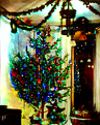
On 9 Sep 1917, Edward H. Johnson died, who was an American electrical engineer and inventor who spent many years in various business projects with Thomas Edison. Although he had more notable accomplishments in the electricty generating industry, he remains noteworthy for a more whimsical use of electric lighting. He is creditted with being the first to display electric lights on a Christmas tree (22 Dec 1882), which he displayed in the window of his New York home. The hand-wired string of bulbs had been made for him, with 80 walnut-sized lamps glowing in equal numbers of red, white and blue light. It caught the attention of a newspaper reporter, who wrote an article about The First Christmas Tree Lights, which was published in the Detroit Post and Tribune(1882).
For a more deadly serious event on this day, you can read about the work of Dr. Hermann M. Biggs. He made major contributions to public health in America, starting with his isolation of cholera vibrio from passengers on a ship of immigrants. Because of the scare of Asiatic cholera at the time, he successfully lobbied for a diagnostic public health laboratory. Thus on 9 Sep 1892, New York was the first city to establish such a laboratory. In 1893, the laboratory expanded its work to test for diptheria and tuberculosis. By early 1895, Biggs was supervising the production of diptheria antitoxin. Hermann Biggs described his work in an article on The New Treatment of Diptheria in The Century Magazine (Jan 1895). You can read how this provided an effective treatment, saving lives from one of the most dreaded and fatal diseases of the era.

On 9 Sep 1842, Elliott Coues was born, an American army surgeon and ornithologist whose pioneering Key to North American Birds (1872) was the first work of its kind to present a taxonomic classification of birds according to an artificial key and promoted the systematic study of North American bird life. As his army assignments took him to various locations throughout the West, he studyied the bird life in each new area, and found new species. He also did valuable work in mammalogy. Today's book pick is: Elliott Coues: NATURALIST AND FRONTIER HISTORIAN, by Paul Russell Cutright, Michael J Brodhead who introduces Coues as one of America's most renowned but least understood ornithologists and historians, as well as a naturalist, anatomist, taxonomist, writer and editor, frontier Army surgeon, occultist, and the youngest person ever to become a member of the National Academy of Sciences. Coues, a giant of the last half of the nineteenth century, was a fascinating, inquisitive, and exacting scientist. The author covers his travels, discoveries, brushes with the Indians, loves, feuds, failures, triumphs, honors. The context is a vivid account of American life from 1840 to the turn of the century. This book has been recommended as belonging on the reading list of anyone interested in the development of science and natural history of America.
It is available from Amazon, typically about New from $52.00. Used from $15.04. (As of earlier time of writing - subject to change.)
| no image | The sciences of Natural History and Botany require so much time to be devoted to them that, however pleasing, they may be justly considered as improper objects for the man of business to pursue scientifically, so as to enter into the exact arrangement and classification of the different bodies of the animal, vegetable, and mineral kingdoms. But reading and personal observation will supply him with ample matter for reflection and admiration. |
| no image | A fact is a simple statement that everyone believes. It is innocent, unless found guilty. A hypothesis is a novel suggestion that no one wants to believe. It is guilty until found effective. |
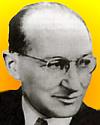 | The history of acceptance of new theories frequently shows the following steps: At first the new idea is treated as pure nonsense, not worth looking at. Then comes a time when a multitude of contradictory objections are raised, such as: the new theory is too fancy, or merely a new terminology; it is not fruitful, or simply wrong. Finally a state is reached when everyone seems to claim that he had always followed this theory. This usually marks the last state before general acceptance. |
| Before you look at today's web page, see if you can answer some of these questions about the events that happened on this day. Some of the names are very familiar. Others will likely stump you. Tickle your curiosity with these questions, then check your answers on today's web page. | |
| Births | |
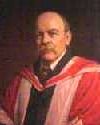 | John Henry Poynting, born 9 Sep 1852, was a British physicist who introduced a theorem that assigns a value known as the Poynting vector. What is measured by the Poynting vector? |
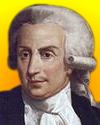 | An Italian physicist and physician, born 9 Sep 1737 investigated the nature and effects of what he conceived to be electricity in animal tissue. Can you name this man? |
| Deaths | |
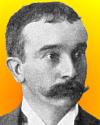 | Andreas Franz Wilhelm Schimper (1856-1901) was a German botanist who made one of the first and finest mapping of the floral regions of the continents. In 1880, he proved the source of stored energy for plants. What is the source of stored energy for plants? |
 | Herbert Friedman (1916-2000) was an American astronomer who made signifcant contributions to the study of solar radiation. In 1949, he obtained the first scientific proof of a certain type of radiation emanates from the sun. What type of radiation from the sun did Friedman discover? |
| Events | |
 | On 9 Sep 1945, the first “bug” in a computer program was discovered by Grace Hopper, when an insect was removed with tweezers from a relay in a computer. She taped it into the log. What kind of insect was this? |
 | On 9 Sep 1926, the National Broadcasting Company (NBC) was created as a new broadcasting company in the U.S. shortly after a company bought (May 1926) the radio network operations of AT&T, which had decided to withdraw from radio. Which company bought the AT&T operations and created NBC? |
Fast answers for the previous newsletter for September 8: iron • (2 p - 1) • carbon-14 dating • stannous fluoride • decade of 1961 • to stop an outbreak of cholera, which by mapping cases of the epidemic, he traced to that area (the well water was contaminated with raw sewage from a leaking cesspool).
 If you enjoy this newsletter, the website, or wish to offer encouragement or ideas, please send feedback by using your mail reader Reply button.
If you enjoy this newsletter, the website, or wish to offer encouragement or ideas, please send feedback by using your mail reader Reply button. Your click on a Facebook, StumbleUpon, or other social button on the site webpages is also a welcome sign of appreciation. Thank you for using them.
© This newsletter is copyright 2020 by todayinsci.com. Please respect the Webmaster's wishes and do not put copies online of the Newsletter — or any Today in Science History webpage. (If you already have done so, please remove them. Thank you.) Offline use in education is encouraged such as a printout on a bulletin board, or projected for classroom viewing. Online, descriptive links to our pages are welcomed, as these will provide a reader with the most recent revisions, additions and/or corrections of a webpage. For any other copyright questions, please contact the Webmaster by using your mail reader Reply button.
--
If you do not want to receive any more newsletters, Unsubscribe
To update your preferences and to unsubscribe visit this link
Executive Real Estate Business Class
-
"It was like a man with wings. It wasn't like anything you'd see on TV or in a monster movie." ...
About the publisher
Search This Blog
Blog Archive
-
▼
2020
(1542)
-
▼
September
(173)
- SCIENCE: Just how big is Everest?
- The Latest News from History News Network
- On This Day for September 30 - Munich Agreement si...
- We are called to return to our foundational values...
- Newsletter for Wednesday 30 September.
- They Killed His Wife And Left Him For Dead – Then ...
- TRAVEL: Telling new truths about America’s histori...
- Make learning fun with Nat Geo Kids magazine! Subs...
- On This Day for September 29 - British mandate in ...
- Newsletter for Tuesday 29 September.
- Special Edition: Dinosaurs come to life like never...
- September 29: On This Day in History
- HISTORY: America's most endangered historic sites
- New This Week on History News Network
- On This Day for September 28 - California “discove...
- Newsletter for Monday 28 September.
- September 28: On This Day in History
- FAMILY: What do I tell my kids about wildfires and...
- On This Day for September 27 - Norman Conquest beg...
- Newsletter for Sunday 27 September.
- September 27: The Rosetta Stone, E=mc² and Fear as...
- The Compass: Indonesia
- On This Day for September 26 - First televised U.S...
- Newsletter for Saturday 26 September.
- September 26: Frances Drake's Circumnavigation, th...
- CORONAVIRUS UPDATE: Is this the end of the office?
- PHOTOGRAPHY: They feed us. Now we see them.
- The assassination of Lord Mountbatten | Enola Holm...
- 39,500-Year-Old Cave Bear Discovered Perfectly Pre...
- On This Day for September 25 - Pacific Ocean sight...
- The Roundup Top Ten for September 25, 2020
- Newsletter for Friday 25 September.
- September 25: Battle of Stamford Bridge, Remote Co...
- ANIMALS: These mighty elephants find peace
- On This Day for September 24 - Federal troops sent...
- Newsletter for Thursday 24 September.
- Global cartels taking control of the world + HPA B...
- September 24: Decline of the Byzantine Empire, Ope...
- YOUR WEEKLY ESCAPE: America's oldest mystery
- SCIENCE: How to cope with a big death toll
- The Latest News from History News Network
- On This Day for September 23 - Neptune observed, J...
- Newsletter for Wednesday 23 September.
- September 23: Nintendo, the Start of Data Processi...
- TRAVEL: How will America’s state parks survive?
- Matching gift opportunity for Sumatran rhinos
- On This Day for September 22 - Solidarity formed, ...
- Newsletter for Tuesday 22 September.
- September 22: Salem Witch Trials, Iraq's Invasion ...
- HISTORY: Who can replace RBG?
- Feed their curiosity! Get Nat Geo Kids magazine fo...
- New This Week on History News Network
- On This Day for September 21 - Joseph Smith's visi...
- Newsletter for Monday 21 September.
- September 21: France, China and a Sheep Shearing R...
- FAMILY: Don’t tell your kids outdated stuff about ...
- On This Day for September 20 - Rome incorporated i...
- Pro-life is not Politics + Vickie Travis's message...
- Newsletter for Sunday 20 September.
- September 20: Attila the Hun, Magellan's Circumnav...
- The Compass: Chile
- Matching gift opportunity for Sumatran rhinos
- On This Day for September 19 - George Washington's...
- Newsletter for Saturday 19 September.
- CORONAVIRUS UPDATE: Young people are spreading the...
- September 19: 1st Country to Grant Women the Right...
- PHOTOGRAPHY: How to make dinos look new (CORRECTED)
- Quick Note: How to Save Videos by Downloading
- PHOTOGRAPHY: How to make dinos look new
- The Mayflower | Medieval spiders | Ancient Egypt f...
- When She Found Out Her Boyfriend Was A Serial Kill...
- The Roundup Top Ten from History News Network
- On This Day for September 18 - Mukden seized by Ja...
- Newsletter for Friday 18 September.
- "Truth Crushes Evil" + We're Winding down + What ...
- YOUR WEEKLY ESCAPE: The country that doesn't exist
- September 18: Great Fire of Moscow, the CIA and El...
- ANIMALS: How U.S. officials stopped the flying squ...
- Two New Podcasts From HISTORY
- Don't miss out: back to school savings for learner...
- On This Day for September 17 - Camp David Accords ...
- Newsletter for Thursday 17 September.
- September 17: Bloodiest Day in the American Civil ...
- SCIENCE: He found part of a one-of-a-kind dinosaur
- SPECIAL REPORT: How the West is primed to burn
- The Latest News from History News Network
- On This Day for September 16 - Mayflower's departu...
- Newsletter for Wednesday 16 September.
- September 16: French Abolish Slavery, Malaysia For...
- TRAVEL: Will slowing down help you get stronger?
- Special Report: How do we end this pandemic?
- On This Day for September 15 - Central Americans g...
- Newsletter for Tuesday 15 September.
- September 15: Darwin Reaches the Galapagos, Penici...
- HISTORY: How the U.S. battled catastrophic wildfir...
- BREAKING NEWS: Possible evidence of life found on ...
- Discover Remarkable Leaders With Nat Geo History M...
- On This Day for September 14 - Mexico City capture...
- New This Week on History News Network
- Newsletter for Monday 14 September.
-
▼
September
(173)
-
Blogroll
-
About
HistoryFact










0 comments:
Post a Comment